Better Breathing
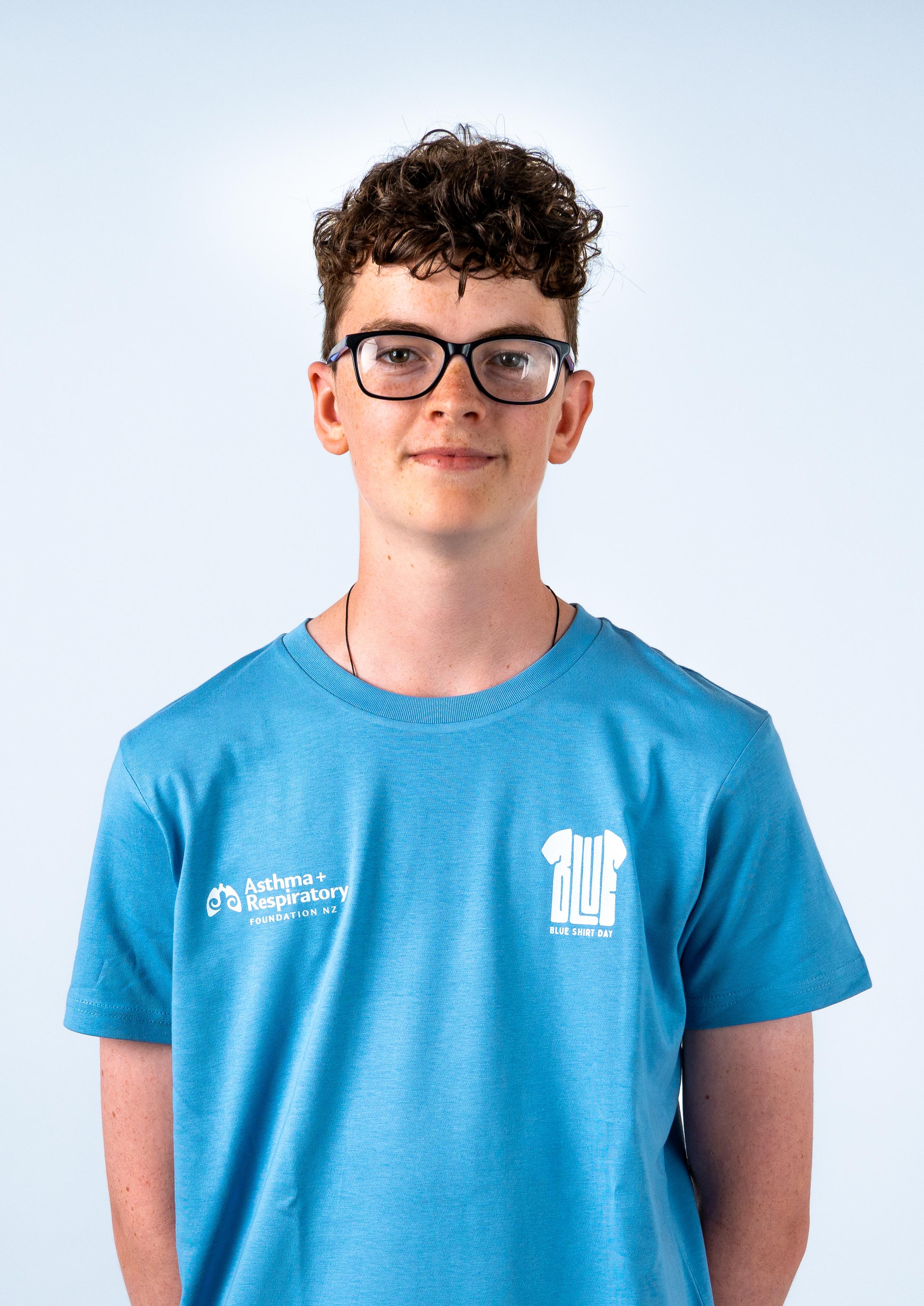


Chief Executive
Letitia Harding
Deputy Chief Executive, Education & Development Manager
Joanna Turner
Individual Giving Fundraising Executive, Office Adminstrator
Christina Goss
PR & Comms Marketing Manager
Chloe Bradwell
Digital Marketing Specialist
Sam Treseder
Marketing Coordinator
Jack Perris
Māori Community Liaison
Sharon Pihema
Community Liaison, Youth Vape Educator
Penelope Joyce
Corporate Sponsorship & Engagement Advisor
Annie Mallett
Grants & Fundraising Executive
Michaela Tahere
Medical Director
Prof. Bob Hancox, BSc, MB CHb, MRCP, MD, FRACP
Chief Cultural Advisor – Māori Sir John Clarke, KNZM, CNZM
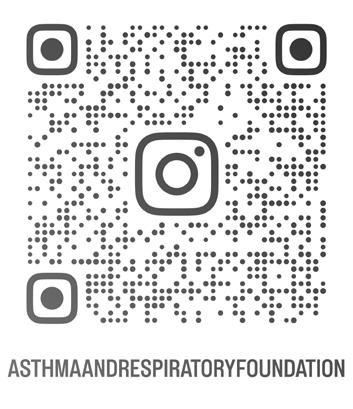
Letitia's Message
Blue Shirt Day 2025
Smokefree 2025 - Our Stance
Train the Trainers programme
Poor ventilation poses health risk
NZ Respiratory Conference 2025
NZ Sign Language Week 2025
Childhood
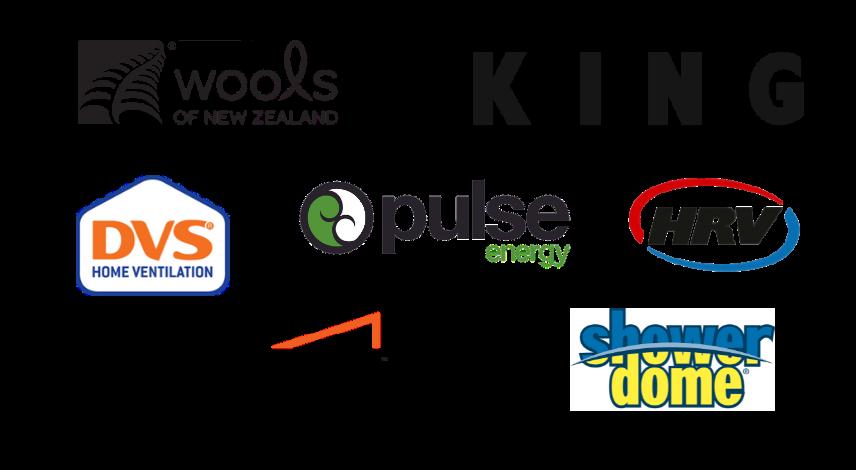

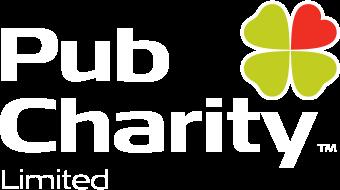

Welcome back respiratory whānau.
I hope everyone enjoyed some summer fun, caught up with family and enjoyed the odd Kiwi BBQ as well.
We know this can be a busy time getting back into work (for those who had a break) I know many of our healthcare professionals continued to work over the Christmas/New Year period, so from everyone here at the Foundation – we thank you for that!
Returning, or starting school, can be a time of stress and anxiety for our children (tamariki), and we know that over the first two or three weeks of Term One, we have more asthma hospitalisations than the winter period. You can read more about the statistics related to the ‘back-to-school’ spike in asthma hospitalisations and how to be prepared on page 19.
It is also why we have just finished running our asthma awareness ‘Back to School’ colouring competition. You can see our winner for this competition on page 18. The competition was open to children aged 13 and under and was proudly sponsored by our Friends of the Foundation Gold Sponsor, DVS. I know that Sailor the Pufferfish is looking forward to visiting Papatoetoe Intermediate School soon.
Each year on International Women in Science Day, we love to highlight some of the amazing women who are contributing to science in New Zealand. This year, we spoke to two inspiring New Zealand women working in the fields of respiratory research and technology, Dr Nikki Turner – a GP specialising in the field of immunology and founder of the Immunisation Advisory Centre, and Dr Tasmin Barry - a paediatrician and researcher with the Medical Research Institute of New Zealand (MRINZ). You can read more about what drove these two women to pursue careers in science and why they still do it, on pages 16 and 17.
Throughout this magazine you will also notice some advertisements from our wonderful Friends of the Foundation partners, such as Showerdome, Wools of NZ and Pulse Energy. We would like to acknowledge the support they give, because, as you know, we receive no government funding to do all that we do. If you are an organisation that wishes to be a Friends of the Foundation partner, then please contact Annie Mallett at friends@arfnz.org.nz.
Over the New Zealand autumn season, we acknowledge World Asthma Day. This year, it falls on Tuesday 6 May and we are asking everyone to dress in blue and host a small fundraiser to support us. You can find out more on pages 4, 5 and 6. Remember the funds raised go towards continuing our vital work, and to assist those who need it.
On page 10, you can read about some new information on ventilation. We are also pleased to announce our partnership with The Air Quality Collective. The Collective was formed last year by a group of top air quality scientists. The partnership allows us to draw on their knowledge and research to better inform and advise the Foundation on all matters air quality-related. And let’s face it, the better the quality of the air we breathe into our lungs, the healthier we all are.
Which brings us to World Smokefree Month.
The Foundation’s stance on 2025 Smokefree Aotearoa, and the role we have played in tightening up regulations around vaping since 2017, is well-documented. We would like to remind everyone that Article 5.3 of the WHO Framework Convention on Tobacco Control (FCTC) sets out an obligation that 'in setting and implementing their public health policies with respect to tobacco control, Parties shall act to protect policies from the commercial and other vested interests of the tobacco industry in accordance with national law'.
Remember, nicotine contained in e-liquids used for vaping products is extracted from tobacco leaves. So, to be very clear: vaping and traditional cigarettes both use tobacco. It may be time to change Smokefree Aotearoa to Smoke and Vape-Free Aotearoa. Find out more about our position on page 8.
Of course, this message wouldn’t be complete without acknowledging the generous support of our readers, our community funding groups, our donor family, our Friends of the Foundation partners and New Zealanders who share our goal of improving respiratory health in Aotearoa.
Thank you for all your support and we look forward to updating you throughout the year on the Foundation's trials and tribulations.
Noho ora mai,
Letitia

TUESDAY 6 MAY 2025

BLUE SHIRT DAY TEE?



On Tuesday 6 May, we want to turn New Zealand blue – from Kaitaia to Bluff!
So we are calling on you to throw on your blue shirt, start a conversation, and help us raise awareness and funds for the one in eight Kiwis living with asthma.
Let’s show that asthma is more than just a medical condition – it’s a daily challenge that deserves attention and support. No one with asthma should have to fight alone.
Together, we can make a powerful statement – one blue shirt, one conversation, and one fundraiser at a time.
Blue represents breath and air – things many of us take for granted but can be a daily struggle for people living with asthma. It also symbolises hope and progress for better treatments in the future.







For a more comfortable home
For a healthier living space
For the earth and ocean
For the style lovers
For a safer home

Our stance to mark World Smokefree Month this May
Well, here we are, 2025.
The year New Zealand is meant to become smokefree.
Will we, as a country, hit that target? Or has the Government’s repeal that stripped us of our worldleading goal done too much damage?
The Asthma and Respiratory Foundation NZ has been one of the strongest advocates for a smokefree Aotearoa for many years.
We’ve backed policies that would have phased out tobacco sales for future generations, reduced nicotine levels, and supported drastically cutting the number of retailers.
Back in 2021, the Foundation celebrated the bold steps taken toward Smokefree 2025, calling it a "significant step forward" in reducing respiratory disease and health inequities, particularly for Māori and Pacific communities.
Fast forward to today, and the mood has shifted.
The Foundation has been vocal in its disappointment over the coalition Government’s decision to roll back key Smokefree laws, warning that the consequences will be severe – there will be more hospitalisations, more deaths, and a missed opportunity to lead the world in tobacco control.
At the same time, the Foundation is deeply concerned that the coalition Government’s approach to achieving Smokefree 2025 is simply to shift the problem of nicotine addiction from cigarettes to vapes – this is hardly a solution.
While the Foundation welcomes the ban on disposable vapes, reduced nicotine levels and tougher penalties for selling to minors, it believes much more needs to be done.
The Government’s recent purchase of thousands of vape kits to help smokers quit raises serious concerns, not just about their effectiveness as an un-proven smoking cessation tool, but also about the lack of consultation, the purchase process, and quality control.
Instead of breaking nicotine addiction, this move will see more New Zealander’s dependent on vaping.
The goal shouldn’t just be a smokefree New Zealand –it should be vape-free too.
So, will New Zealand still reach its smokefree goal? We aren’t optimistic.
But what we do know is that vaping is not the answer to achieving smokefree Aotearoa.
Te Hā Ora Asthma and Respiratory Foundation Certified Course
Be a part of the first-of-its-kind 'Train the Trainers' Vape Harm Education Programme in Aotearoa, delivered by the Asthma and Respiratory Foundation, a trusted provider of vaping education for young people.
With experience delivering over 350 workshops in 60 schools, reaching over 6400 students, the Foundation is now equipping teachers, health professionals, youth workers, and community leaders with the tools and resources to deliver vaping harm education in their own communities.
To be one of the nation's first Vape Harm Educators, register your interest using the QR code below. The education you deliver to your community could save lives, and provide support to the rangatahi who are most at risk.
This programme is designed for those working with rangatahi and young people in schools (Year 7-10) and community settings.
It provides practical training, relevant resources, and ongoing support to help you confidently deliver engaging, evidence-based workshops.
Register your interest today and help create healthier futures for young people in Aotearoa.



Many buildings in New Zealand have poor ventilation, increasing the risk of airborne illness and indoor air pollution, new research shows.
The research, conducted by New Zealand’s top air quality scientists, measured carbon dioxide (CO₂) levels in 31 buildings – including schools, aged care centres, gyms, and offices – in Auckland, Christchurch and Otago. It showed that many indoor spaces did not get enough fresh air.
Gyms and education spaces were often the most poorly ventilated, while offices and churches tended to have better air quality.
Why?
Air Quality Collective scientist Ian Longley says it’s simple – windows and doors were opened more frequently in offices and churches.
“What struck us (from the experience of going to a range of centres to assess and improve ventilation) was how easy, in principle, it was to dramatically improve air quality.
“Making a small change – like opening doors and windows more often – can reduce the risk of infection, or reduce indoor pollutants which can trigger reactions, without expensive upgrades.”
Asthma and Respiratory Foundation NZ Chief Executive Ms Letitia Harding says it is clear from this research there are easy, cost-effective ways to help circulate fresh air to reduce respiratory flare-ups.
“There’s a common misconception that improving air quality requires expensive technology, when in fact, something as simple as opening a window more often can make a huge difference.”
This research is particularly important for those living with respiratory conditions, Ms Harding says.
“For the one in five Kiwis living with a respiratory disease, poor air quality can contribute to flare-ups.
“We need to ensure that people with asthma, COPD, and other respiratory conditions can safely enter any indoor space without fear of triggering symptoms.”
This research was conducted to inform the Government's approach to pandemic preparedness.
The Collective was concerned that too little is being done, to not only prepare for the next pandemic, but also to protect long COVID victims and to enable sensitive individuals to enter any building confident that the air won’t trigger or worsen their symptoms or condition.
The Asthma and Respiratory Foundation NZ has partnered with The Air Quality Collective – New Zealand’s only dedicated air quality research and monitoring organisation. This collaboration will ensure better access to air quality data, raise awareness about the impact of pollution on respiratory health, and advocate for improvements that benefit all New Zealanders.
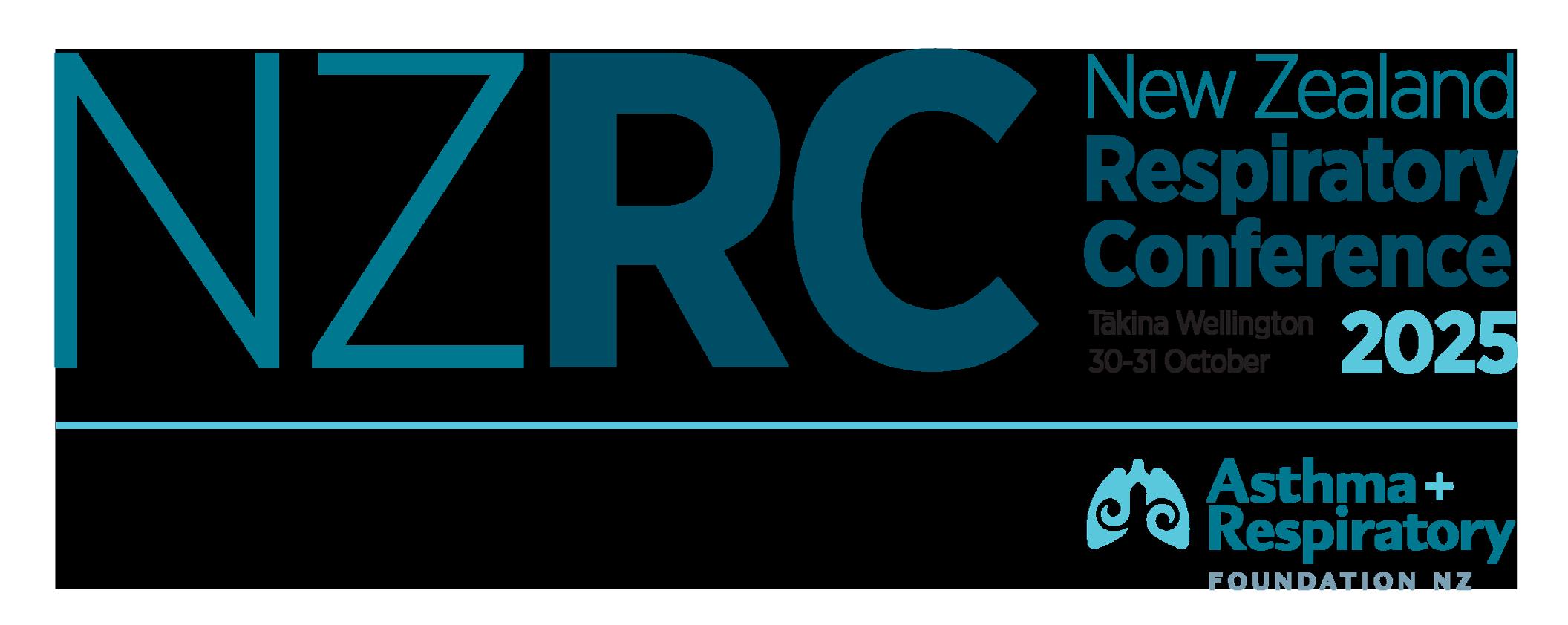





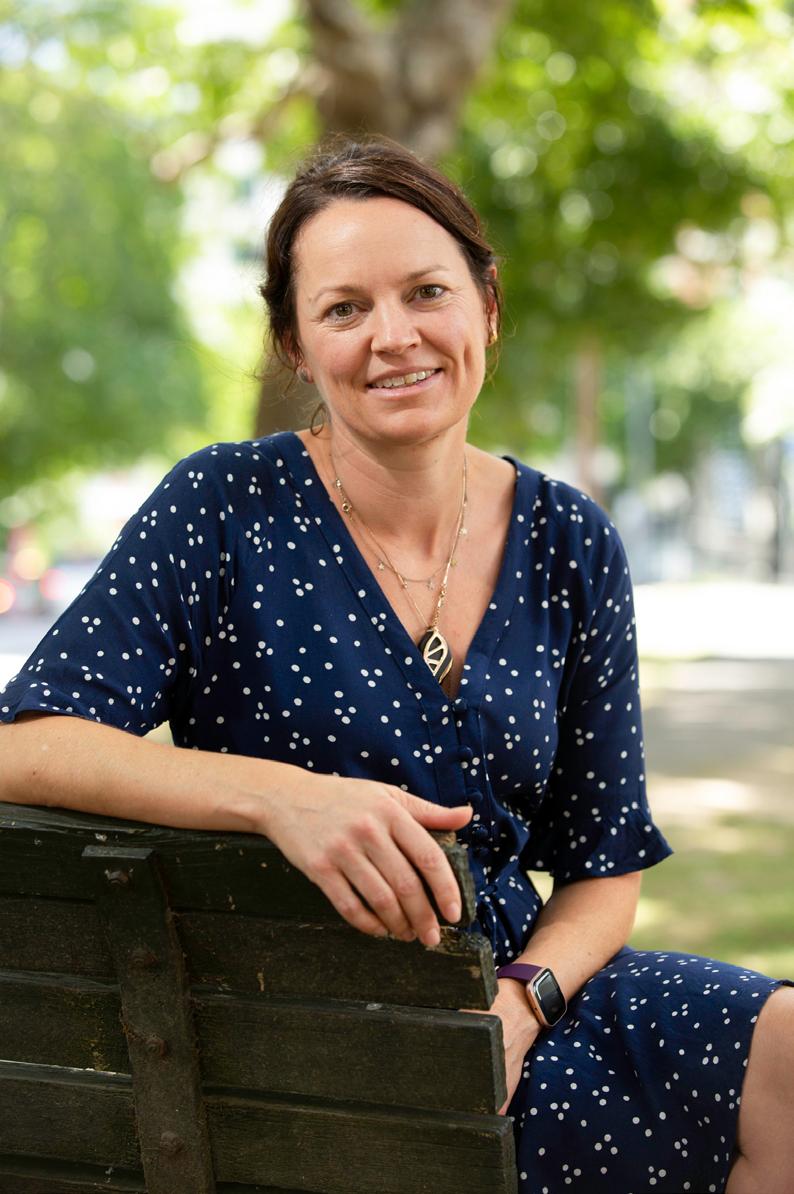
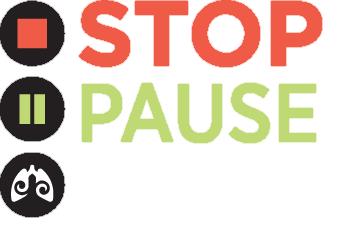




TE WIKI O TE REO TURI, 5 - 11 MAY 2025
New Zealand Sign Language (NZSL) Week is an annual event that celebrates one of New Zealand’s official languages and serves as a platform to dismantle barriers, dispel misconceptions, and foster greater inclusion.
For the Asthma and Respiratory Foundation, we know all too well the barriers people can face – in our community, it comes in the form of inequitable healthcare and poor housing, to name a few.
So this year (and for many more to come), we want to support Deaf Aotearoa to elevate awareness and appreciation of this language.
Clear communication is essential in managing respiratory health, especially in emergencies when quick action is needed. By knowing some key signs related to respiratory diseases, we can help ensure that more people can share vital health information with confidence –regardless of the language they use to communicate.
Raising awareness during NZSL Week also supports the Foundation’s goal of making essential health information accessible to as many people as possible, ensuring that no one is left without the knowledge and resources they need to manage their respiratory health.








With our Power Shift plan, you can enjoy half price weekends and off-peak power every day.
All power used between midnight Friday and midnight Sunday is half price.
Save your baking, laundry, or DIY projects for the weekend, and enjoy the sweet satisfaction of saving.

Zöe Manderson
The Asthma and Respiratory Foundation NZ recently published their updated report on the impact of respiratory disease in New Zealand. One of the findings is that one in eight children in New Zealand has asthma, so chances are there is a child you know, maybe even one in your family, diagnosed with asthma.
With all eyes on asthma this World Asthma Day (Tuesday 6 May) it is a good time to think about some of the management strategies that can be used to minimise the impact of asthma symptoms and the unique role that physiotherapists have in supporting children with asthma.
One of things I come across most often in the children I see with asthma, is a change in their breathing pattern at rest - mouth breathing, an upper chest pattern (rather than a lower chest or diaphragmatic pattern) and an altered ratio of breathing in and out.
Breathing in this manner can mimic asthma symptoms and make you feel short of breath or feel like you aren’t getting a satisfying breath. This in turn can make you feel anxious and more short of breath – a vicious cycle!
Zöe Manderson is a respiratory physiotherapist in Taranaki for Te Whatu Ora and a member of the Asthma and Respiratory Foundation NZ's Scientific Advisory Board.

If you notice this with your child, it could be useful to seek help from a physiotherapist.
Physical exercise can be another thing that children with asthma find difficult, as it can trigger their symptoms. However, it is very important that children with asthma are confident and able to exercise, as it helps improve their lung function and supports their physical health.
If your child experiences exercise-induced asthma symptoms, they could try taking their reliever puffer before they exercise. It is also useful to consider other triggers (e.g. cold air, pollen) and controlling those triggers for those if exercising outside. A physiotherapist can help provide guidance about exercise if you are unsure.
Childhood asthma is common in New Zealand, but with good management, those affected can still lead a fit, healthy, and happy life.
For more information on managing childhood asthma, please refer to the Asthma and Respiratory Foundation’s resources on its website.



Showerdome’s shower top product was invented by Ken Evans, a Tauranga-based engineer, looking for a solution to dampness and moisture in bathrooms. His innovative solution is now sold worldwide and Showerdome remains on a mission to improve the health of Kiwi homes.
Marketing Manager Claire van Horn says the team strongly believes that every New Zealander has the right to a warm, dry home. “The benefits of a healthy home are immediate, and in a lot of cases, life changing, particularly for those with respiratory conditions. We appreciate that there is no one ‘magic silver bullet’ that will solve the issue of damp Kiwi homes, but we are proud to be able to play our part and make a difference in many homes across the motu,” she says.
Claire says the company’s ethos makes it a natural fit to partner with the Foundation. In her case, the connection is also personal: “As a mum of two young girls who have both suffered with chronic croup and respiratory illnesses throughout their childhood, there is nothing I wouldn’t do to improve their quality of life. A warm, dry home undoubtedly has a positive impact on their health. It’s one of the reasons I am passionate about what I do.”
Eliminating moisture laden air from your bathroom is one of the key benefits of installing a Showerdome®. All that steam rolling around in your bathroom, settling on your walls and along the grout is creating a breeding ground for unhealthy mould, mildew and fungus. Unless you deep clean and scrub every surface daily, then you already have a problem.

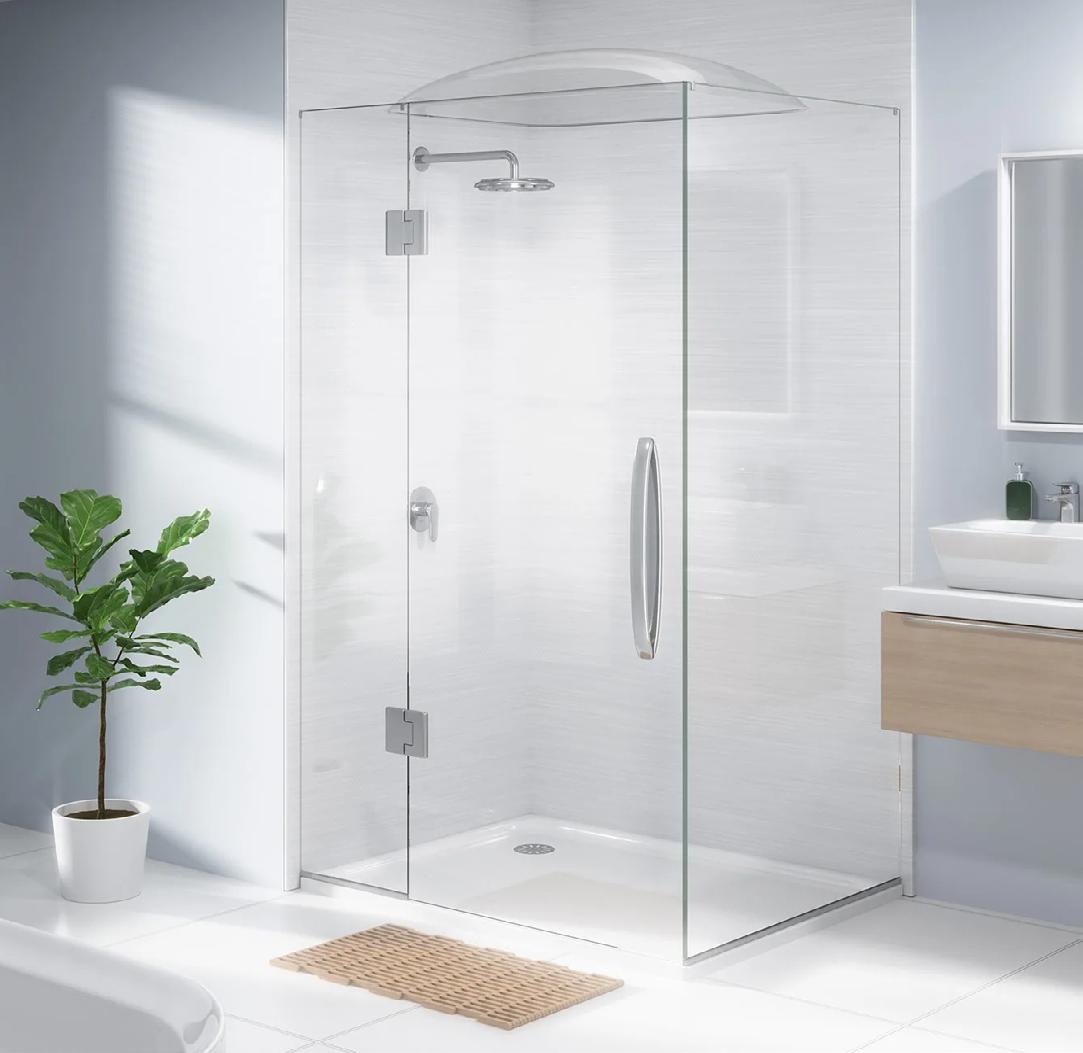
With Showerdome®, you don’t have these steam issues anymore. No more mould, mildew or fungus means a much healthier bathroom, and less requirement to use harsh chemicals for cleaning, which is ecologically better and also substantially reducing the cleaning time in your bathroom.

Dr Nikki Turner
Dr Nikki Turner knew she wanted to be a doctor when she was just six years old. Now, she’s an academic GP, is a founder of the Immunisation Advisory Centre and leads a university research team which focuses on respiratory disease.
No one in Nikki’s family is in medicine. But that didn’t stop a six-year-old Nikki from having big dreams. “I wanted to be a doctor since the age of six, when I decided to focus on people rather than wanting to rescue animals."
“Somewhat simplistically back then, it seemed a great job where I could be helpful and useful.”
All of which is true.

Nikki wears many hats – splitting her time between being an academic general practitioner and working in public health – all in the hope of empowering communities to help save lives.
It was the arrival of COVID-19 that really brought respiratory disease to the forefront.
“There is increased awareness, but there is still a large amount of severe illness, and – at times – death, that is preventable with better approaches across many areas from policy and systems to health literacy,” she says.
"We have excellent tools to improve health, but often our systems do not function the best to empower our communities to utilise them effectively, so we use research to help these gnarly complex issues."
Nikki views science as “a shared accumulation of knowledge to help make some sense and support rational thinking”.
“Science doesn’t offer answers, but it is a useful grounded tool in a complex difficult world, it helps to stop us going down personality-driven rabbit holes.”
A career in science allowed Nikki – as a woman – to have a voice and be respected, she says.
“It also has allowed me to work collegially with some other amazing women. I don’t want alone, and it is a joy to be part of a like-minded community.”
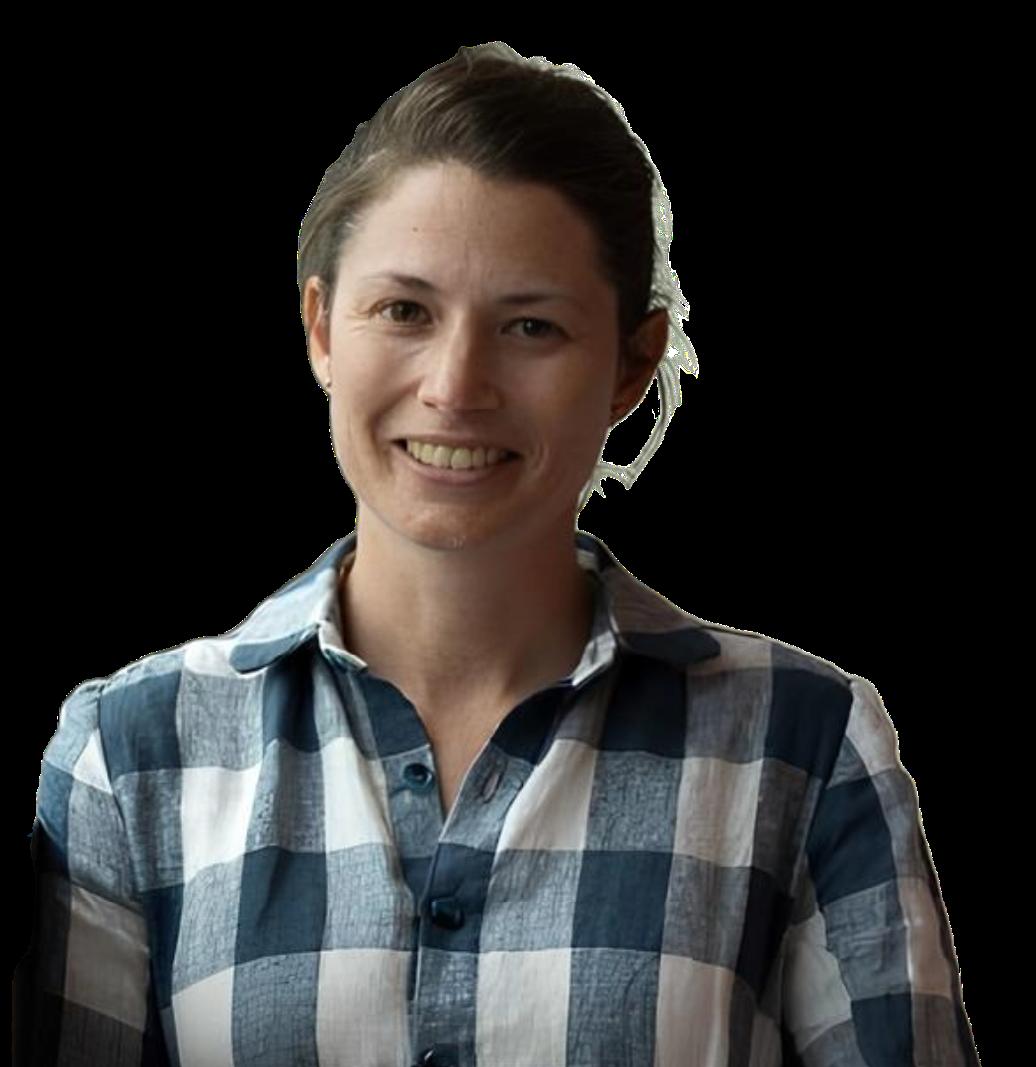
Poor grades didn’t stop Tasmin Barry – now Dr Tasmin Barry – from striving for the top. Her love of science began when the big man in red brought her a microscope kit one Christmas. This kickstarted her journey to become a paediatrician and a principal investigator for a world-leading study that could improve the lives of thousands of children living with asthma.
Tasmin says poor health in childhood spreads like the ripples on a pond, affecting your life going forward.
It’s something she is committed to addressing. She wants to give children living with asthma a better quality of life – and to keep them out of hospital.

Tasmin, who is the principal investigator for a world-leading asthma study called START CARE, is also simultaneously completing a PhD in Clinical Research. START CARE, a study led by the Medical Research Institute of New Zealand (MRINZ), is investigating the best way of treating asthma in tamariki aged 5 to 11 years.
"I was interested in promoting the health of children and young people, and working to ensure they had the best opportunity to live full lives going forward into adulthood - this is just one way I can do that."
Asthma is one of the most common chronic illnesses in tamariki globally, but Aotearoa New Zealand has particularly high rates.
In the year 2000, there were around 4000 hospital admissions for tamariki with asthma and wheeze –that was around 5 times the rate seen in adults.
Tasmin admits her journey to where she is now was a little “convoluted”.
"I had very poor grades on completing my final year of high school and did not apply for university; instead, I took a job cleaning at a local motel for a year.
"But, science has always been a strong interest (at least since Santa brought me a microscope kit for Christmas), so I knew I had to go back to school."
She re-sat her finaal year of high school, then went to university to gain a Bachelor of Science (biochemistry) degree. She put in the long hours in the library and eventually gained a graduate admission into medicine.
Once she finishes her PhD, she hopes to find a role where she can use both science and medicine to improve children's health, she says.

As part of this year’s ‘Back to School’ awareness campaign, the Foundation ran an underwaterthemed colouring-in competition featuring Sailor the Pufferfish and Jelly (from our asthma education show).
We had over 100 entries – a massive increase on last year’s competition – so judging was extremely tough!
We narrowed it down to 10 finalists, with the DVS team making the final call.
In the end, it was Maanvir, from Papatoetoe Intermediate, who was chosen as the winner.
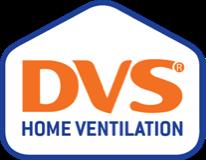
Their amazing entry was fun, bright and vibrant!
A huge thank you to our Gold Friends of the Foundation partner, DVS, for sponsoring the competition, and providing Maanvir with a $250 art supplies voucher (and one for the school as well), plus a live asthma education show with Sailor the Pufferfish.
Thank you to all those who entered!


A spike in asthma-related hospitalisations is expected as children flock through school gates for the start of a new year.
The Asthma and Respiratory Foundation NZ is encouraging everyone to be aware of the symptoms of an asthma attack and how to respond, with hospitalisations from attacks at their highest during week 3 of Term 1.
Symptoms of an asthma attack are a worsening cough, persistent wheezing, shortness of breath and/ or feeling tight in the chest.
Chief Executive Ms Letitia Harding says the back-toschool period is always a vulnerable time for the one in eight Kiwi children with asthma.
"The ‘back-to-school effect’ is greater than the ‘winter effect’ when it comes to children’s respiratory disease, with the risk of hospitalisation two and a half times higher on the peak day in the third week of Term 1, than on the first day of term."
International studies have shown that various factors are associated with the increase, including a change of environment and exposure to different allergens, changes in emotions such as stress or anxiety, and exposure to more viruses from being around more people, Ms Harding says.
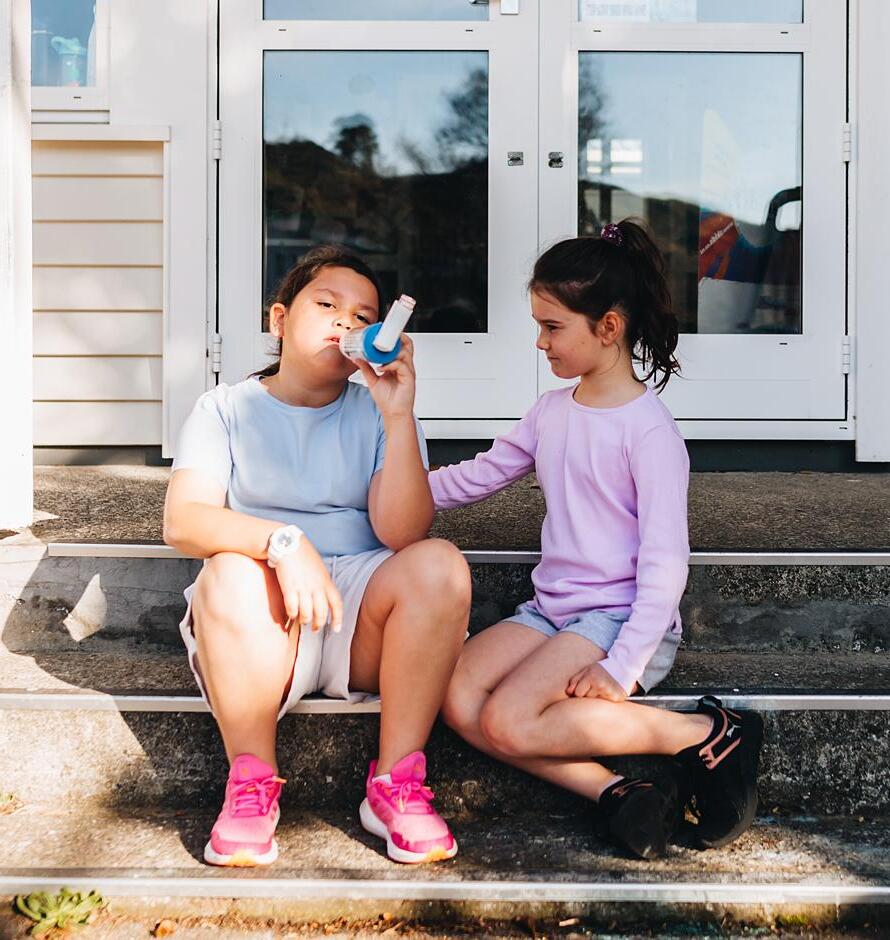
To keep children safe through the return-to-school period, parents and caregivers should ensure that their child has an Asthma Action Plan, which is shared with their school and their teacher, Ms Harding says.
"Make sure your child is taking their preventer medication as prescribed and bringing their reliever inhaler to school, and check that it’s not empty or out of date."
Asthma is a common illness in New Zealand, affecting one in eight children and one in eight adults. About 96 people die from asthma each year - that’s nearly two people per week.
In addition, one-third of all respiratory-related hospital admissions are children and it is estimated that more than 360,000 school days are lost each year due to asthma-related symptoms in children.
For most children, going back to school is an exciting time, Ms Harding says.
"But unfortunately, for many, this period can lead to severe reactions - putting children at risk."That’s why investing in educating children about asthma is a huge focus for us," she says.
The Foundation provides numerous Sailor the Pufferfish live musical shows at schools throughout the year to help children and teachers learn about asthma triggers and what to do in an emergency. These lessons can also be accessed digitally through our website.
In addition, Asthma Action Plans can be downloaded for free on the Foundation’s website, or via the QR below.


Is your support group missing? Let us know: info@arfnz.org.nz
Horowhenua Breathe Easy Support Group
06 368 8069 iandlmckenzie@xtra.co.nz 9 Kilsby Place, Levin 5510
Asthma NZ - Auckland
Monday-Friday, 9am-5pm 09 623 0236 anz@asthma.org.nz 581 Mt Eden Road, Auckland www.asthma.org.nz
Asthma and Respiratory Management BOP Inc
Monday-Friday, 9am-4pm 07 577 6738 0800 276 267 reception@asthmabop.org.nz 254 Chadwick Rd, Gate Pa, Tauranga 3112 www.asthmabop.org.nz
Asthma Waikato
Monday-Friday, 9am-4pm 07 838 0851 info@asthmawaikato.org.nz 18 Claudelands Road, Hamilton East, Hamilton www.asthmawaikato.org.nz
Eastern BOP Asthma and COPD Support Group
07 307 1447 or 0800 227 363 copd@drct.co.nz
C/O Karen Couchman, Disabilities Resource Centre Trust, 141 King Street, Whakatane 3120
Marlborough COPD Support and Exercise Group
Contact Gillian McCloy 027 454 5102
Gisborne and East Coast Asthma Society 06 868 9970 lynlolohea@hotmail.com 14 Kennedy Street, Gisborne 4010
Breathe Hawke’s Bay
Monday-Friday, 8.30am-3pm 06 835 0018 admin@breathehb.co.nz 199 Dickens Street, Napier www.breathehb.co.nz
Tu Kotahi Māori Asthma Trust
Monday-Friday, 8.30am-5pm 04 939 4629 / 0800 939 462
anne@kokiri-hauora.org.nz 7-9 Barnes St, Seaview, Lower Hutt 5010
Asthma NZ - Wellington
Monday-Friday, 9am-5pm 04 237 4520 wellington@asthma.org.nz Level 2, 120 Featherston Street, Wellington 6011 www.asthma.org.nz
Respiratory Support Nelson
Monday - Friday, 9am-2pm 03 544 1562 / 027 546 7675 asthma.nelson@xtra.co.nz 9 Cambridge Street, Richmond, Nelson 7020 respiratorynelson.co.nz
CanBreathe Canterbury
Monday-Friday, 9am-4pm 03 386 0278 office@canbreathe.org.nz 117 Main North Road, Papanui, Christchurch 8052 www.canbreathe.org.nz
Level 2, 85 The Terrace, Wellington 6011 PO Box 1459, Wellington 6140
0800 100 506 asthmafoundation.org.nz